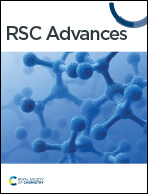Effect of destability time on microstructure and properties of hypoeutectic high chromium cast iron
Abstract
The present work investigated the effect of destabilization time on the mechanical properties and microstructure evolution of high chromium cast iron, and scanning electron microscopy and electron probe microanalysis techniques were employed. The results show that the hardness of hypoeutectic high chromium cast iron is related to the size and volume fraction of secondary carbides precipitated from the matrix. The hardness of the alloy continues to rise due to the continuous increase of the volume fraction of the secondary carbide at the initial stage of destabilization. The alloy reaches its peak hardness value at 950 °C and 1000 °C for 1 hour holding time. The solid solubility of carbon and alloying elements in the matrix increases as the holding time extends, resulting in a large number of carbides redissolved into the matrix, making the hardness of the alloy decrease; the hardness of the alloy at 14 h is less than that at 10 min. Under 1050 °C, the size and density of the secondary carbide increase significantly; extending the holding time will lead to the continuous reduction of the carbide rod that provides strength, thus, the hardness curve shows a downward trend.


 Please wait while we load your content...
Please wait while we load your content...